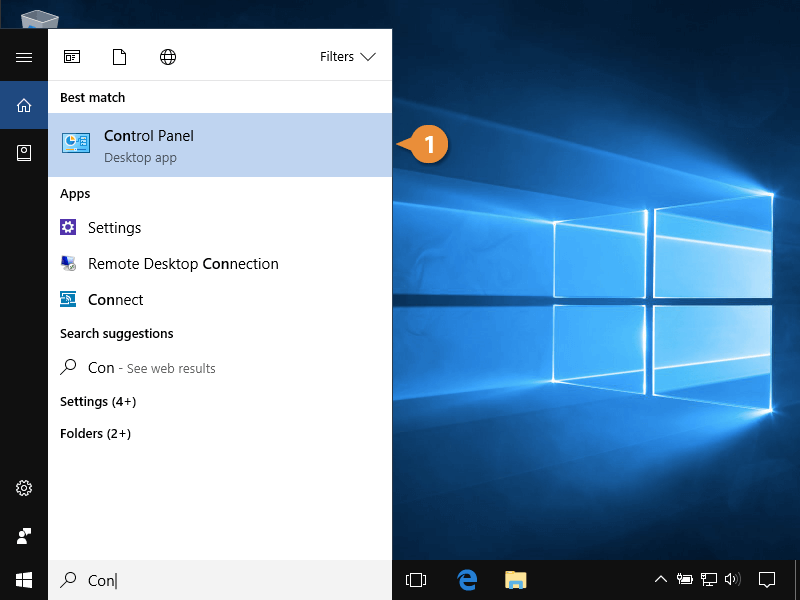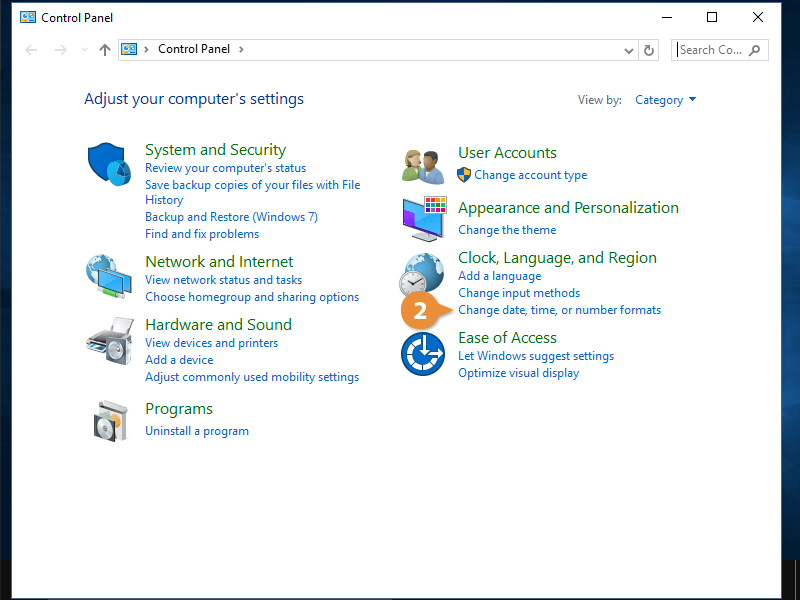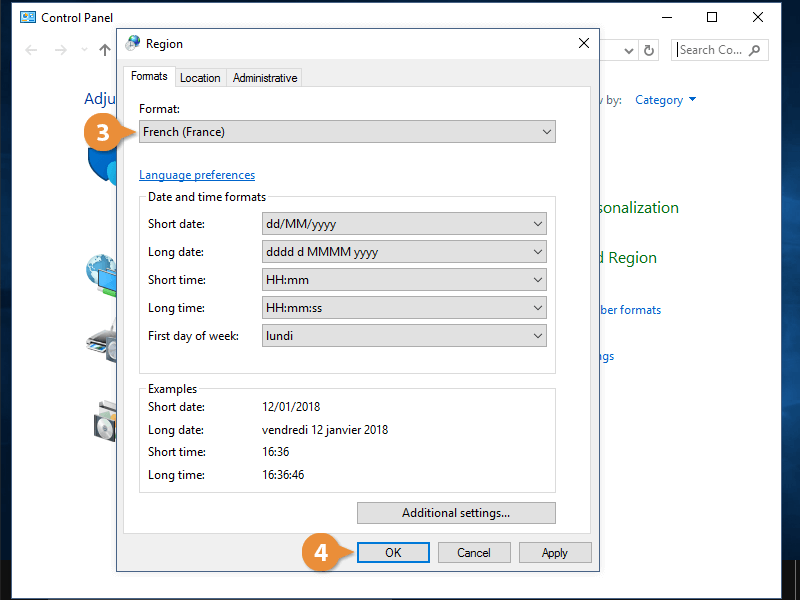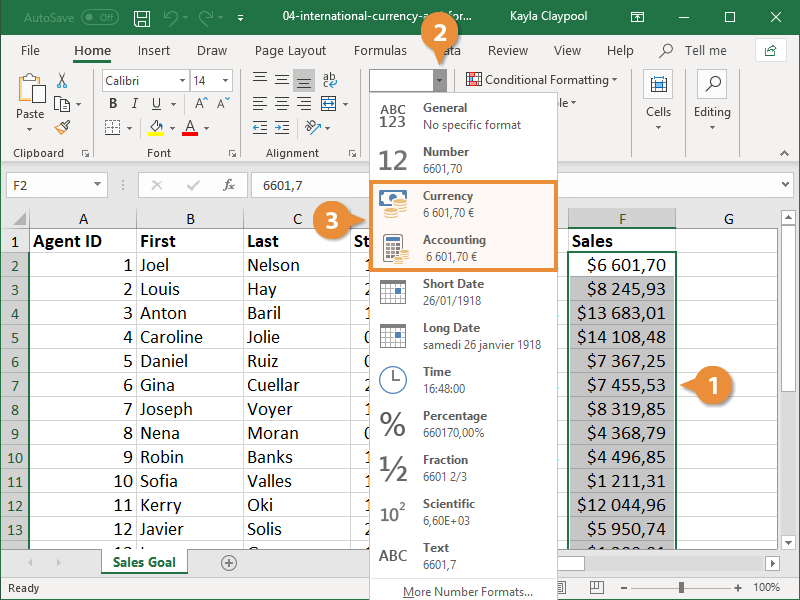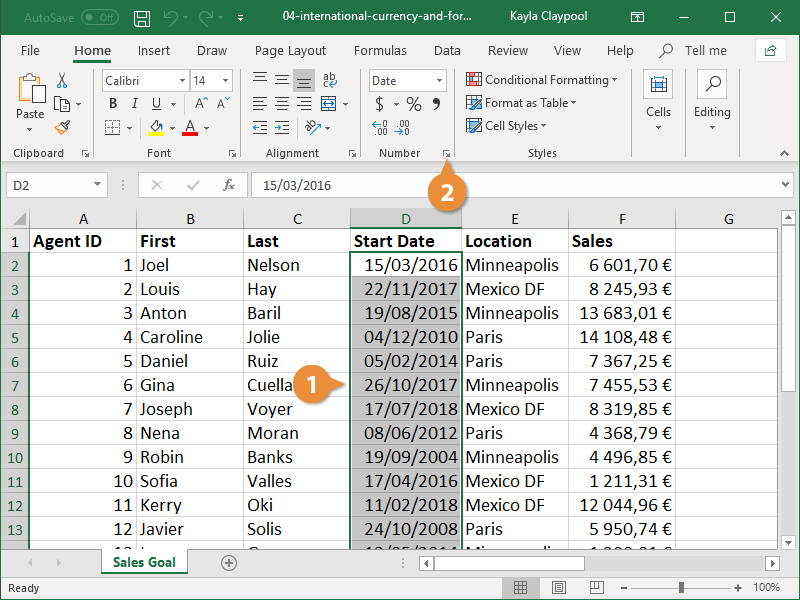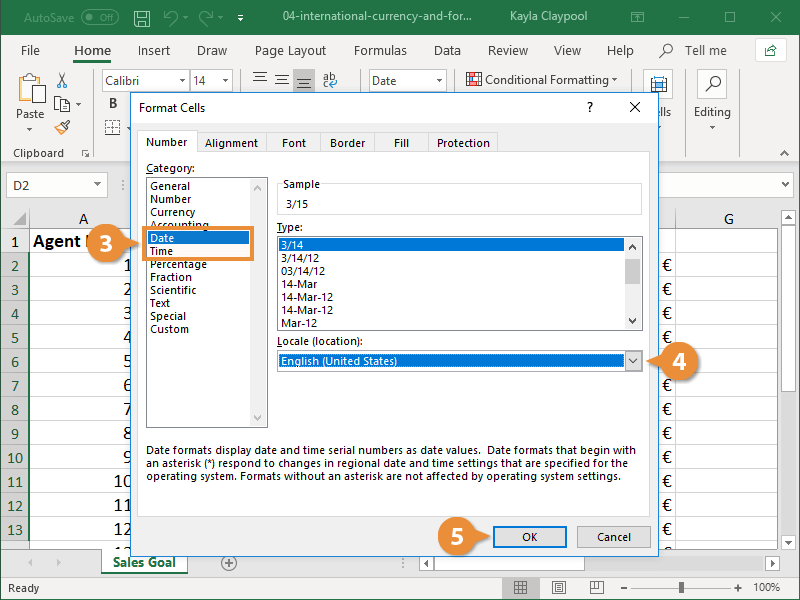If your spreadsheet will have international use, it’s best to format it for the appropriate region so the data will be clear to your target audience.
When Excel formats dates, times, and numeric values, it looks to the Windows regional format settings. When you change these settings in Windows, it will automatically carry over into Excel.
- Open the Control Panel.
- Click Change date, time, or number formats.
The Region dialog box displays. Any changes made here will automatically be reflected in Excel and other applications on your computer.
- Select the regional format you want to apply.
Notice you can preview examples of the formats based on the settings you picked at the bottom of the window.
- Click the OK.
Dates, times, and numeric values will automatically reflect these changes in Excel the next time you open the program.
While the Windows regional setting automatically adjusts the format of dates, times, and numeric values, you must manually apply the currency format.
- Select the range you want to format.
- Click the Number Format list arrow in the Number group of the Home tab.
In the menu, you’ll see any number formatting containing a currency symbol matches your selection in the Windows regional settings.
- Select Currency or Accounting.
You can change the date and time formatting of a specific cell or range to something other than the Windows settings.
- Select the range you want to format.
- Click the Number group’s dialog box launcher.
The Format Cells dialog box opens.
- Select Date or Time in the Category list on the Number tab.
- Select the international format you want to apply from the Locale (location) list.
- Click OK.
The international format is applied to only the selected cell or cell range.

